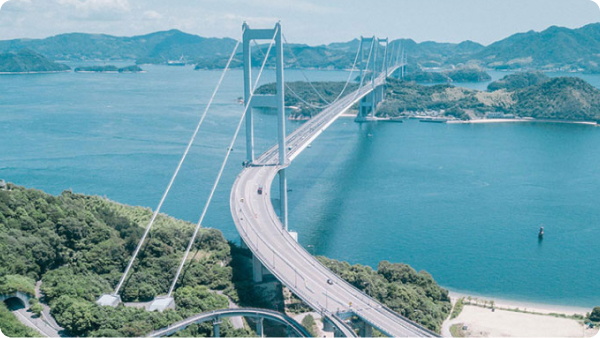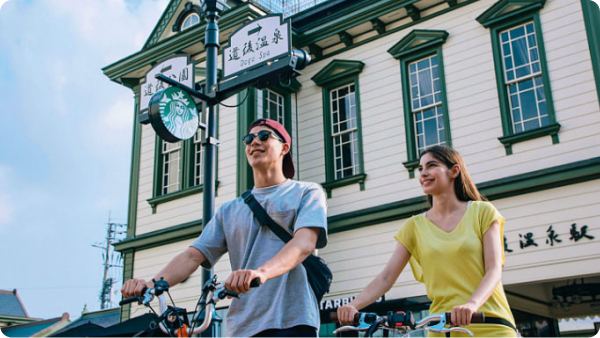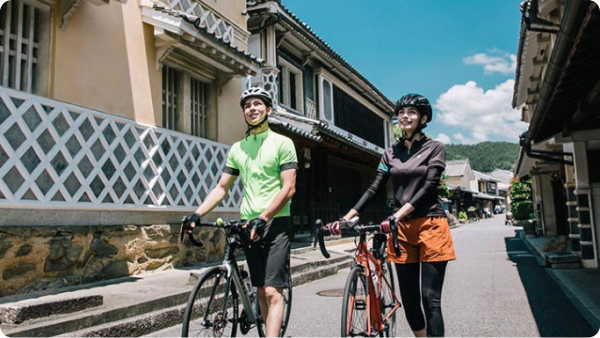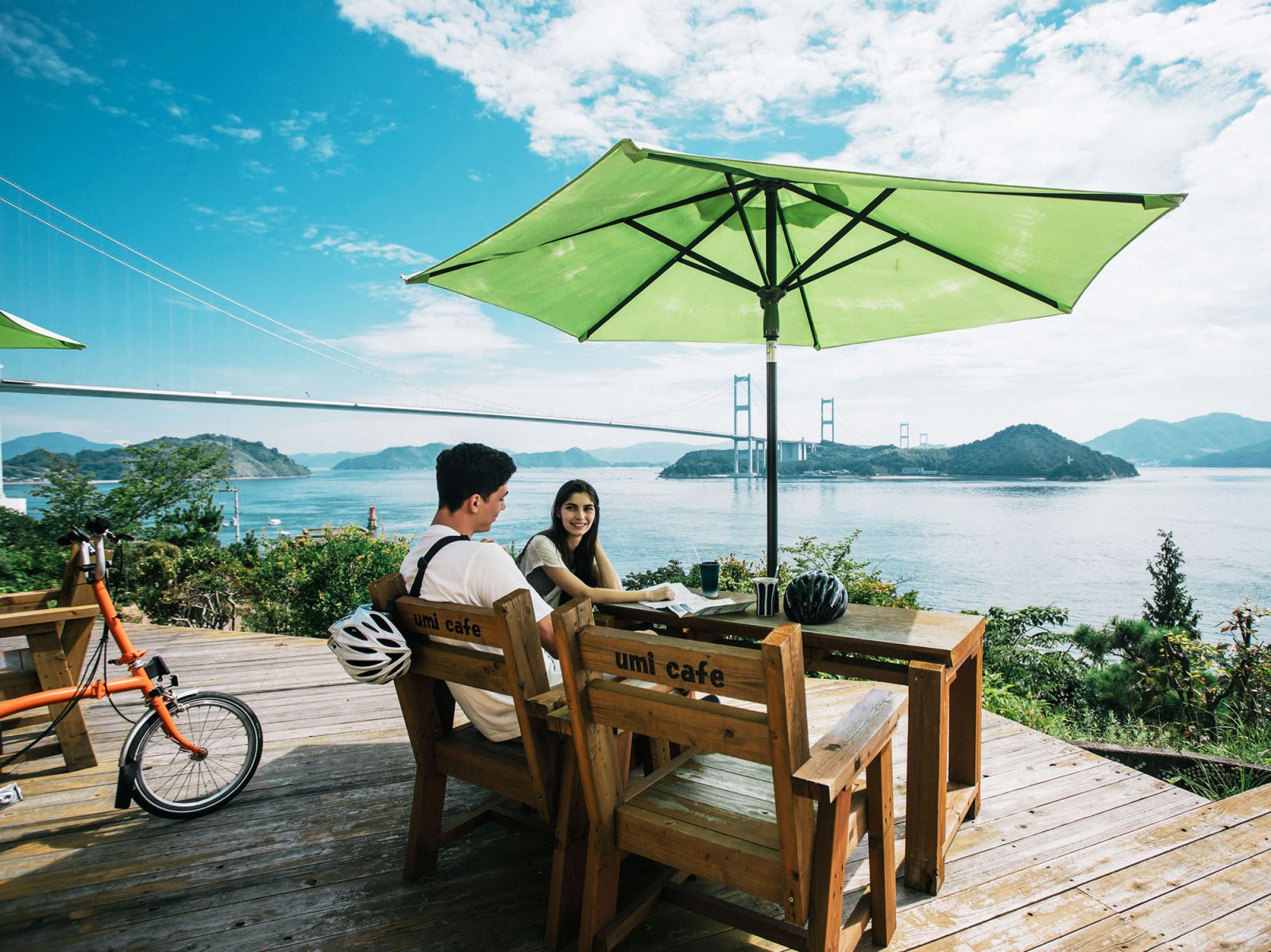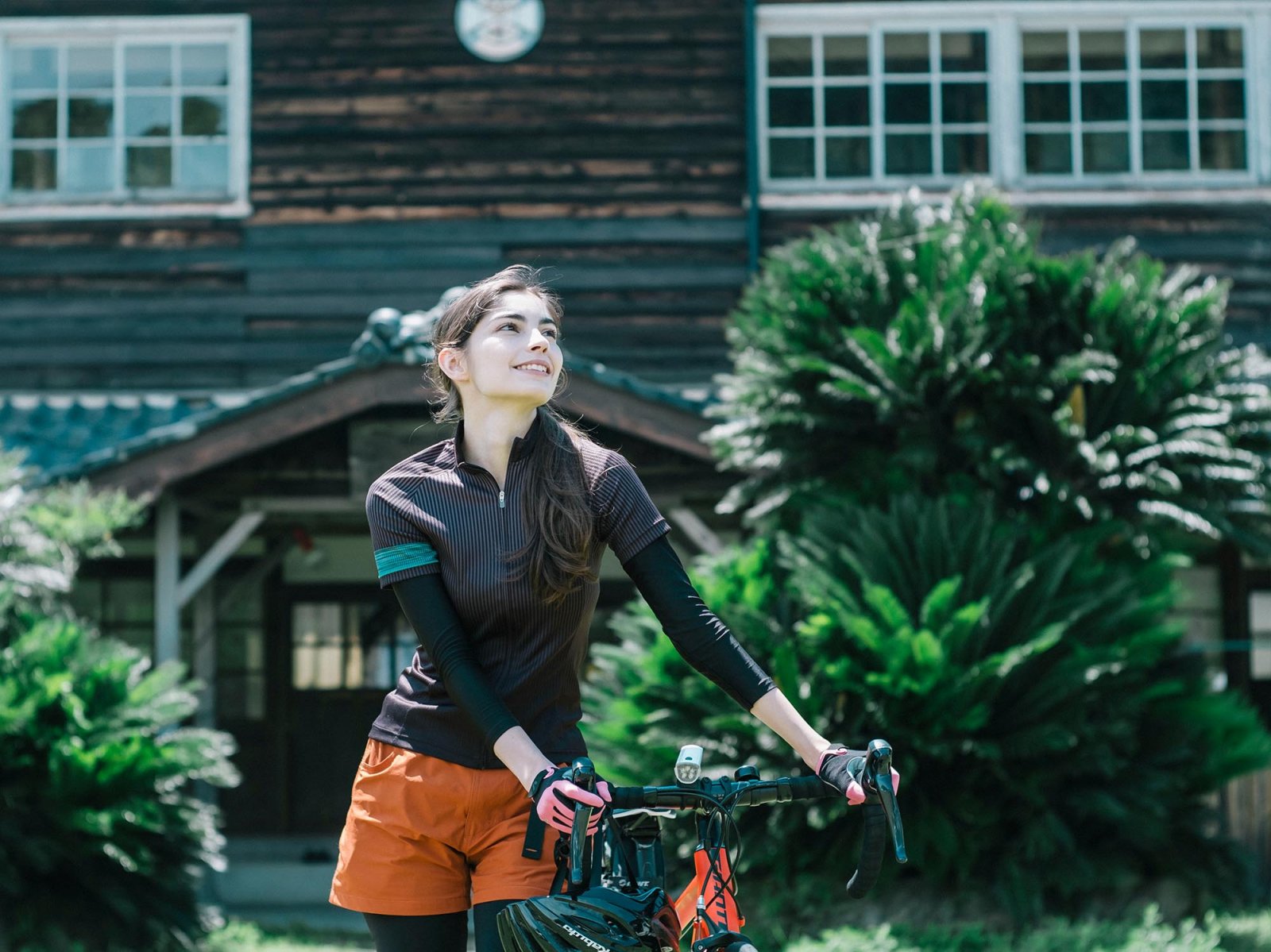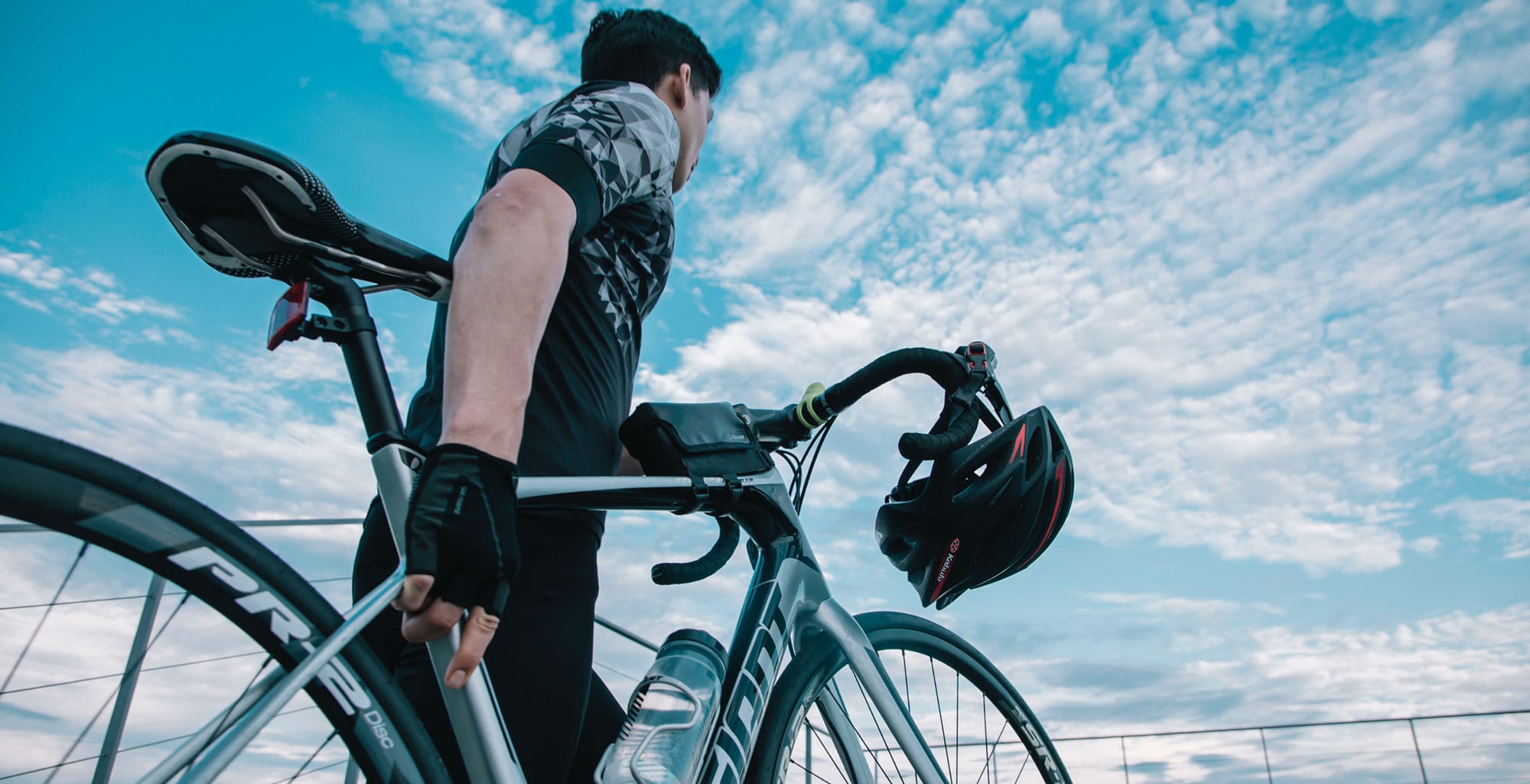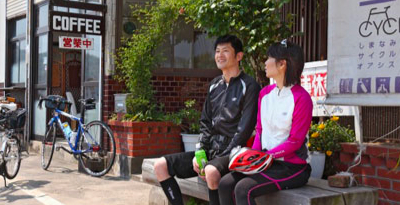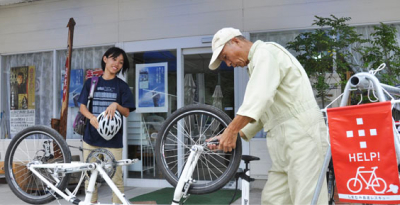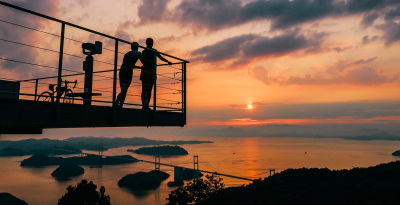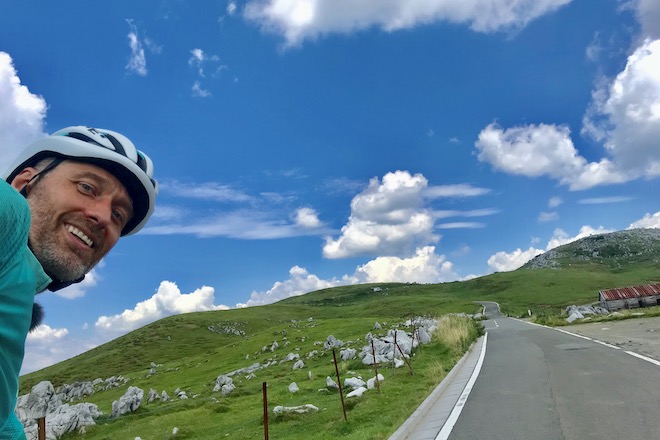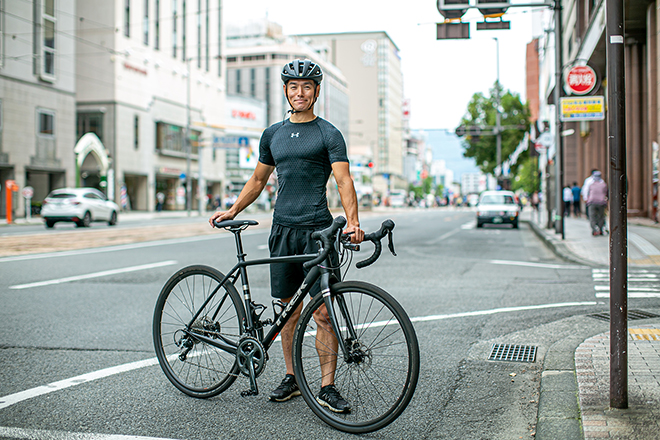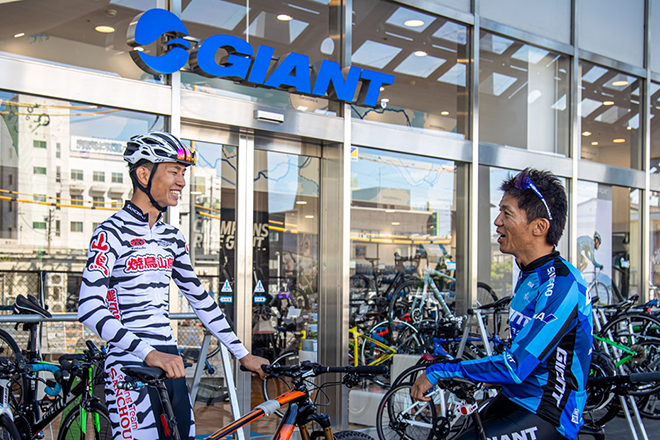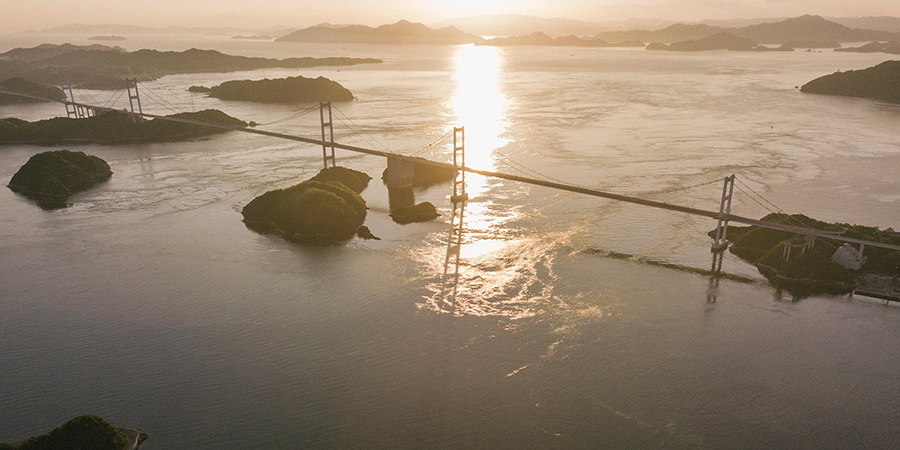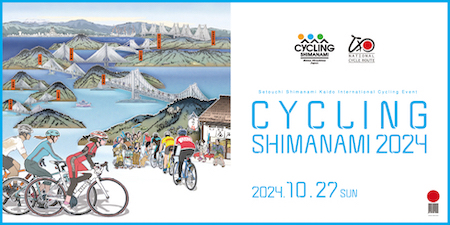An introduction to cyclo-cross by Masahiko Mifune.
Why does he recommend it to road bike riders too?
An introduction to cyclo-cross by Masahiko Mifune. Why does he recommend it to road bike riders too?

You cannot fully enjoy bicycling in Ehime prefecture only by riding road bikes. The off-road environment of Ehime, rich in nature and adventure, is also perfect for enjoying bicycles with great handling characteristics such as cyclo-cross bikes. Accordingly, many off-road competitions are held in Ehime.
Cyclo-cross is a sport that is said to have begun as part of winter training for road race athletes. There is renewed attention on Ehime both inside and outside the prefecture due to the decision to host the 25th All Japan Cyclo-Cross Competition, the first for the Reiwa Era, in Uchiko, Ehime, on December 7 and 8, 2019.
Masahiko Mifune, a former professional road racer who has represented Japan in competitions throughout the world, and current chairman of the Cyclo-Cross Subcommittee of the Japan Cycling Federation (JCF) recommends cyclo-cross to road bike riders in particular. Here he tells us all about why that is.
The number of cyclo-cross participants is on the rise as riders seek the exhilaration of riding through mountains and forests.
– The first All Japan Cyclo-Cross Competition was held in 1996. What is the state of the cyclo-cross sport today in Japan, 20 years later?
Mifune: Cyclo-cross started to be taken seriously in Japan in the 1990s. Currently, there is a movement to consolidate the various categories and rules used throughout Japan, primarily lead by the JCF.
As part of the trend, I took over as chairman of the Cyclo-Cross Subcommittee in 2019. I’m doing the best I can out of a desire to return all the support I received in competitions in the past. I also accepted the job of coach for the Japan cyclo-cross team in 2019 with the same intent.
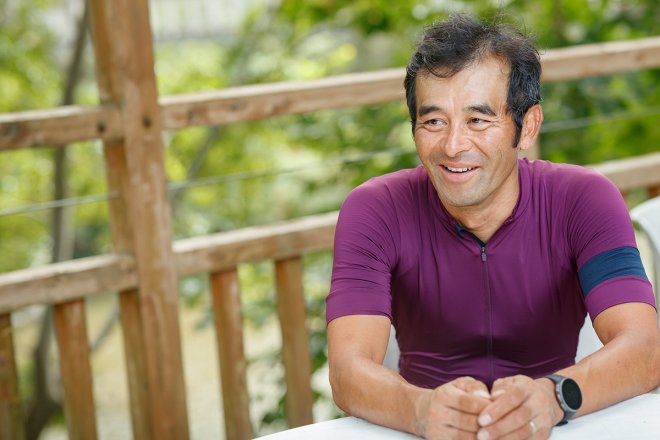
Masahiko Mifune
– You won the 6th All Japan Cyclo-Cross Competition in 2000. Are more people enjoying cyclo-cross today than they were at that time?
Mifune: Yes. I feel there has been a significant increase overall. While the main participants are men in their 30s and 40s, the number of women has also increased compared to before. However, the overwhelming majority are at what I’d call the entry level who enjoy it as a hobby.
Unfortunately, the number of participants with the capability to compete overseas is surprisingly small. When I was still active, I made it into the top 15 at the cyclo-cross race held by the Union Cycliste Internationale (UCI) in Belgium, but no other Japanese rider has reached that level yet. In that sense, it’s hard to suggest that Japanese competitors have reached an international level of capability.
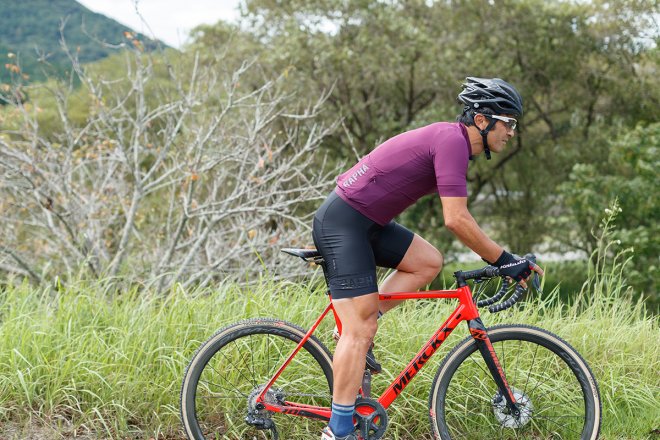
– When did you first discover cyclo-cross?
Mifune: It was around 2000 when I was active as a professional road racer based in Belgium. I entered a cyclo-cross race at the time, but everyone around me was saying that “cyclo-cross is more than a hobby, less than a job” (laughs). I just really enjoy riding bicycles, so I enjoy both on-road and off-road riding.
Actually, I’m the type of personality to quickly lose interest, so if I ride a road bike for too long, I start wanting to try a different kind of road on my cyclo-cross bike.
The main season when I was a professional athlete in Belgium was springtime, so I would always fall into a slump from June to September. By the end of the fall season around November I would be completely burned out.
That’s when it would be time for my cyclo-cross bike. The sense of speed is different, and riding a bicycle through mountains and forests is exhilarating. That’s a great change of pace, and that gives you the motivation to take on road racing again. It’s also a great way to train, so I think its worthwhile for road bike riders to try cyclo-cross riding.

What is the difference between road and cyclo-cross bikes? How to choose the bike right for you.
– Road bikes and cyclo-cross bikes seem very similar. What are the differences between them?
Mifune: They are both very similar in style. But to mention a few details, cyclo-cross bikes have thicker tires than road bikes to improve handling. The regulations for competitions set the maximum size at 33 mm, so that size has become the most common.
Also, the air pressure is lowered for cyclo-cross tires so that the deformation increases the surface contact with the ground. While road bike tires typically use an air pressure of 6 to 8 bars (86 to 116 psi), for my cyclo-cross bike I usually use 1.4 to 1.8 bars (20 to 27 psi). I adjust it according to the road surface situation.

– That’s such a huge difference!
Mifune: Yes, it is. So the ride feel is quite different from a road bike. But cyclo-cross race courses also feature paved roads, so overseas athletes are careful to practice riding on them with the low cyclo-cross air pressure.
– When I think of cyclo-cross, the image I have is of the rider getting off their bike to carry it on their shoulder when going up steep inclines.
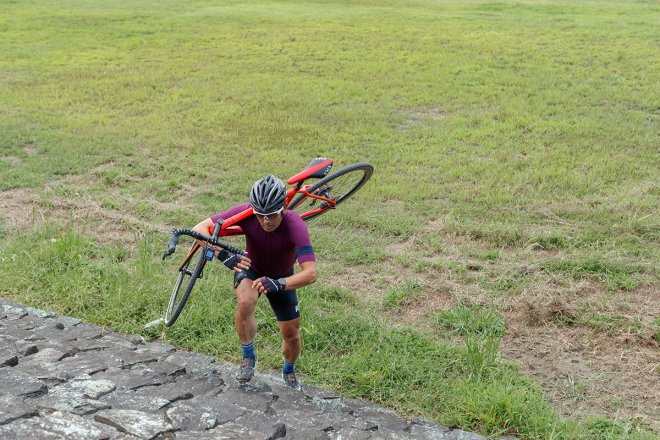
Mifune: The frame material is the same as for road bikes, and the most common is carbon that is light weight and has high vibration absorption. But cyclo-cross gears are a bit lighter. Off-road surfaces present greater resistance, so it wouldn’t be possible to ride full out using the same gears as road bikes.
Also, the tires are wider, so there is much more clearance for the wheels. This has the effect of reducing the chance of mud getting stuck in between. The handles are the same as for road bikes, but for the brakes, we use disk brakes that have greater braking force.
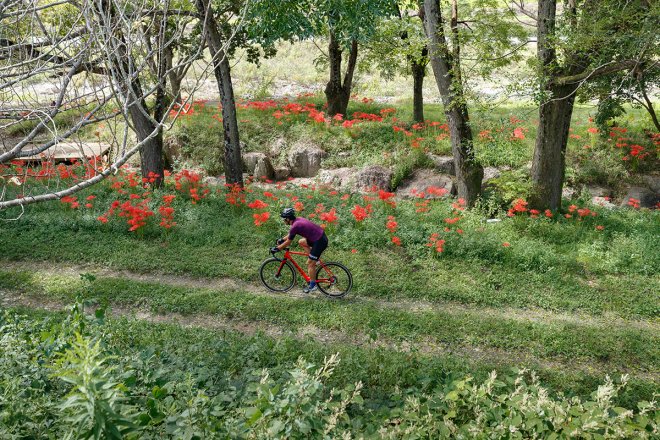
– If you were going to start cyclo-cross riding, what things should you consider when choosing your ride.
Mifune: There are some things that are difficult to explain in words, but the main criteria is that the bike meets your height and body shape. Also a bike that looks less likely to get caked in mud is preferable.
For a fully assembled bike, I would recommend a model in the middle range costing around 200,000 Yen. If you select a cheap entry model because you’re a beginner, you will find that many of those are very heavy.
Cyclo-cross bikes should not be too light or too heavy. Either would be hard for a beginner to control, so you should choose the bike after asking the staff at a specialty bike shop. I recommend starting out with an assembled bike and then leveling up gradually as you enjoy yourself.

First practice with an experienced rider. “You can’t win unless you can convert running ability into propulsive force.”
– What things should you watch out for when practicing cyclo-cross riding?
Mifune: Well, at first you should avoid riding alone. It is really hard to just ride off-road on the spur of the moment. It is really hard to develop your riding style and technique through learning on your own.
For example, even a beginner can turn normally on a paved road while riding a road bike, but with uneven off-road paths, the way you turn differs depending on the conditions there. That’s something you can’t learn unless you’re taught by someone experienced.
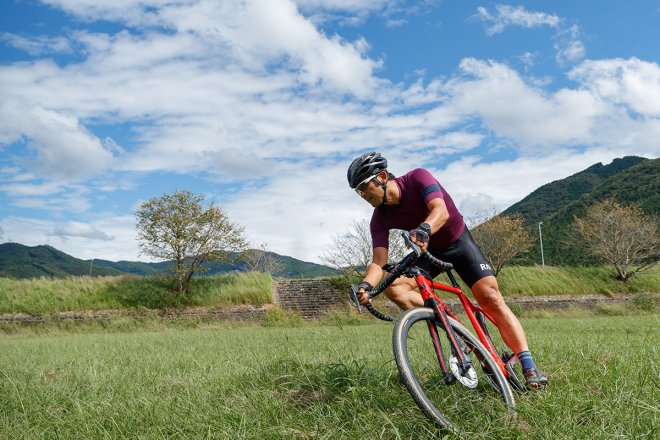
– So is power important for off-road cyclo-cross riding, such as body and muscle strength?
Mifune: You do need power, but that is not enough to ride well. Your power will be useless if you don’t also have the decision making skills to read the road surface or the skill to overcome difficult routes.
In terms of competitions, just because you can ride fast on a road bike doesn’t mean you will also be fast in cyclo-cross riding. You can’t win unless you can convert running ability into propulsive force. I want new riders to try riding under numerous conditions to master the necessary techniques.
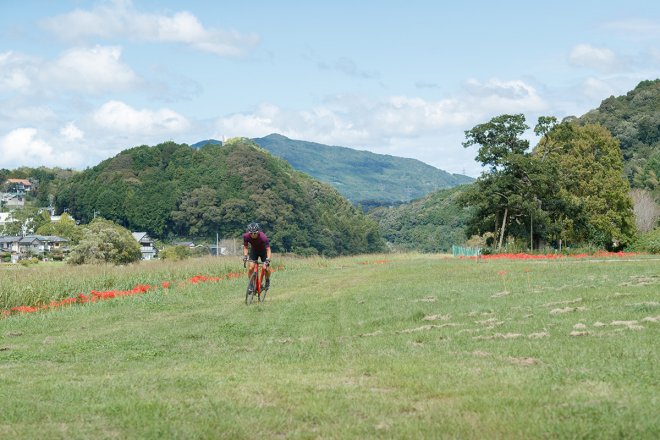
– So it is necessary to properly learn from an experienced rider and convert your running ability into propulsive force.
Mifune: Yes, it is. You have to practice cyclo-cross riding in nature, so the risk of injury cannot be avoided. In that sense, it is best to ride in a group led by an experienced rider.
It is also not possible to know what the course will be like in a competition, so practice is important for developing adaptability. If you always ride the same route, then you will begin to see the patterns and it will get boring. That’s why when I ride routes I’m familiar with, I sometimes go in the opposite direction (laughs). It’s really interesting because the impression of the route is completely different.
Riding on routes with a variety of conditions and comparing them is also a great source of experience. You will recognize what you are good at and bad at, and it will help you in overcoming what you are bad at.
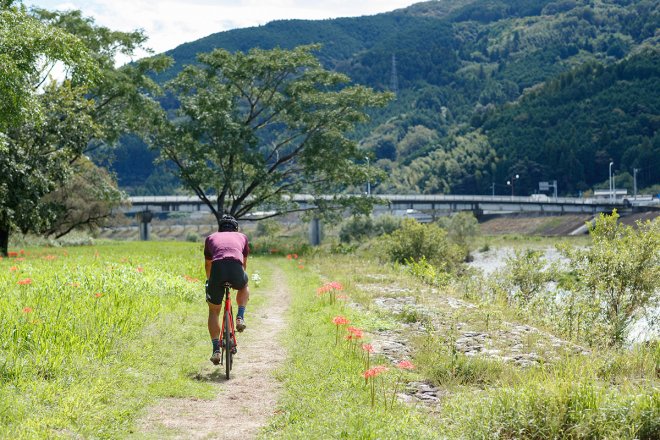
– It sounds like it would also be fun to find and adopt your home ground.
Mifune: Sure, but there are many places where it is prohibited to ride your bike there, so you should only practice there after careful research.
One approach is to develop a short circuit as long as there is enough space. Also, for a group of around six people, you can train continuously by setting an interval and riding in pairs.
If you plan on entering competitions, then I recommend practicing with thought for practical issues, such as by creating routes that plan for carrying or pit stops.
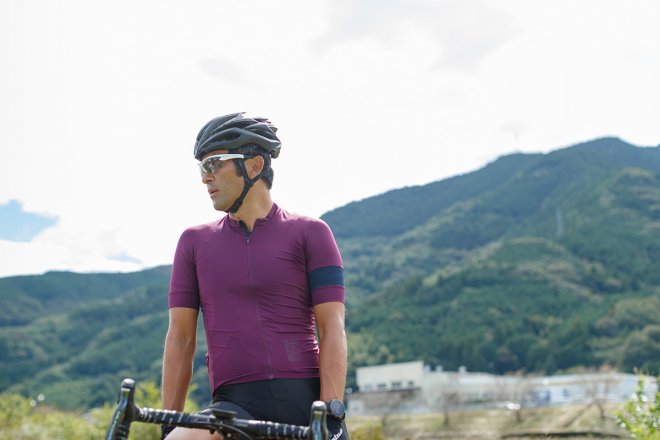
We designed a course that could make a claim to deciding the number one racer in Japan.
– What do you find most appealing about cyclo-cross riding?
Mifune: I believe the fun of bicycling stems from the dialog you have with yourself to achieve a goal you’ve set for yourself. It’s more than simply trying to go faster.
While cyclo-cross has a strong association with racing, there is also something more pure in daily riding, such as the desire to try conquering that difficult hill, or wondering what you’ll find at the top of that staircase.
Children love that sense of adventure, don’t they? I used to ride around the mountain roads on my Mamachari (called utility bicycles or city bicycles in the west) when I was a child. Four of us would get together and drag each other’s bikes together up the worst hills (laughs). I believe the real enjoyment of cyclo-cross is an extension of that childhood sense of adventure.
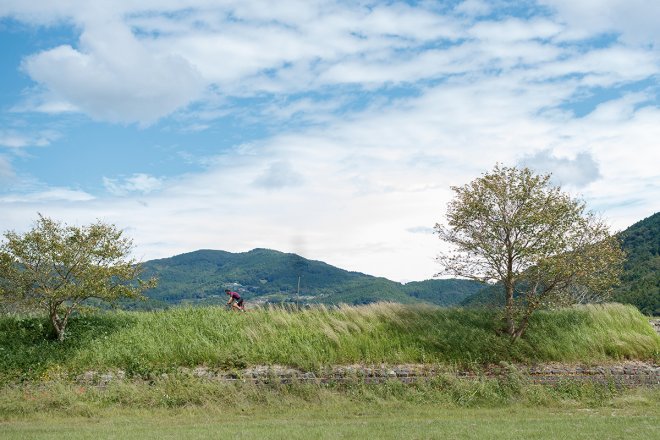
– In December 2019, the 25th All Japan Cyclo-Cross Competition, the first for the Reiwa Era, will be held in in Uchiko.
Mifune: With the complete support of Ehime Prefecture, we were able to establish a challenging course with both on-road and off-road elements.
The course will basically follow the riverbed of the Oda river, starting at the Ikazaki Local Autonomy Center and ending at the Uchiko City Hall. This is the first time such a long segment of public roads will be used as a route for a cyclo-cross race.
Mifune: The best part of cyclo-cross race courses is how much use you can make of existing geographical features. We tried many different things, such as including stack stones along berms in the course in several locations, and using a tall Japanese nettle tree loved by the locals as a turn around point. I think the resulting course features a great deal of variety.
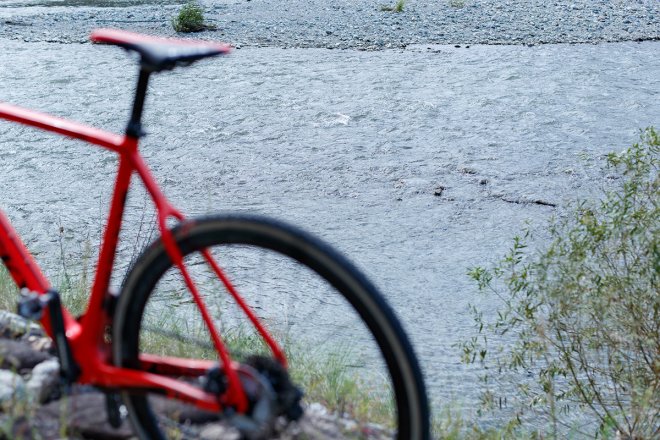
– That will certainly entertain the participants, but will also make for dynamic viewing for the spectators as well.
Mifune: That’s true. Cyclo-cross race courses cover a smaller area compared to road races, making it easier for supporters and spectators.
My hope is that with this race, we will be able to say without fear of contradiction that the winner of it is the best rider in Japan. The reason we made the course complex with so many different elements is to ensure that it could not be won unless the rider was truly skilled. Otherwise we wouldn’t be able to claim to be the race that decides the number one rider in Japan.
I hope many people come to see it. I myself look forward to a race that will be well worth watching.
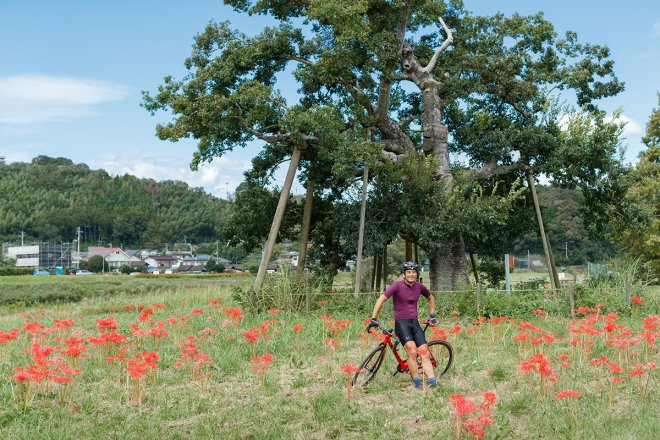
PROFILE
Masahiko Mifune
Masahiko Mifune was born in Kyoto in 1969. He began bicycle racing when he entered the Hanazono Junior & Senior High School in Kyoto. He then traveled to Europe after graduating where he was active in the Netherlands until 1993. After registering as a professional racer in 1994, he competed until 2002 from his base in Belgium. He has competed in a total of 1,500 professional and amateur races, and placed in approximately 200 of those. His achievements include being the first Japanese athlete to place in the top fifteen in the race held by the Union Cycliste Internationale (UCI) in Belgium, and winning the 6th All Japan Cyclo-Cross Competition. He moved bases back to Japan in 2003 and competed in leading races with the Miyata Subaru team. From 2007 he joined Team Matrix Powertag as captain. After retiring from professional racing in 2008, he began vigorously participating in long distance brevets (a type of unranked long distance timed race). In 2015, he became the first Japanese athlete to reach the goal of the Paris – Brest – Paris long distance race of 1,200 km as a member of the leading group. His other activities include serving as a guest commentator for bicycle road racing and opening road bike and cyclo-cross bike riding schools throughout Japan, and instructing junior athletes. He serves as the head of the company Massa Enterprise, as chairman of the Cyclo-Cross Subcommittee of the Japan Cycling Federation (JCF), and as coach of the Japan cyclo-cross team.
Articles you might like
We use cookies on this site to enhance your user experience. If you continue to browse, you accept the use of cookies on our site. See our cookies policy for more information.





